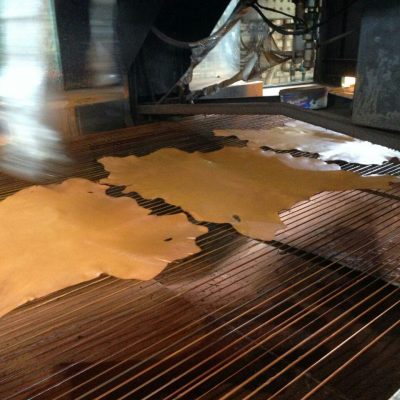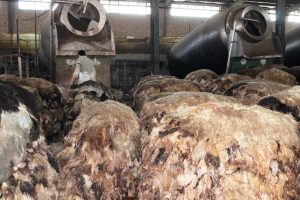
One of the skills that a tannery must have is to be able to standardize the work required by industry-specific machinery. This is not necessary for an intern in other industries. leather engineer
If you ask this question to people who work in the leather industry, you will probably get different answers. Some may tell you that the only skilled technicians working in the tannery are those who have not been able to find a cleaner and more productive industry. Some will say that only indifferent and stubborn people can survive in this industry. Some may also believe that leather engineering is not really much different from other process industries.
Everyone will answer your question based on their opinions, but having spent decades in the European leather industry, I believe that a good leather engineer needs a combination of three basic characteristics. First, passing a wide range of internships and learning technical training, second, the ability to maintain and maintain engineering standards in harsh working conditions, and third, a proper understanding of the leather production process.
If one of these characteristics does not exist, that person can never have the necessary functionality. In addition, the best way to achieve this desired combination is to train and train these engineers in the leather industry itself.

In developed countries, most people work in leather engineering usually move from one industry to another. Heavy industries in the past usually operated as conveyor belts from engineering internships that were far from their real needs, and these people were the ones who were used as cheap labor and often quit their jobs after the internship they know.
Large national industries usually offer extensive and excellent 5-year internship programs in various business fields. Unfortunately, such internships cannot be sustained in the move towards privatization. As the heavy industry has contracted and those who were trained along the way are now working in recent decades.
Technical education in the industrial sector in particular has become more detailed and specific, and often this education has been extended to universities. If we look at the half-full glass, the training has moved towards the production of a versatile and skilled technician, but there are also negative aspects in this regard.
1- Passing a wide range of internships and technical trainings
2- Ability to maintain engineering standards in harsh working conditions
3- Correct understanding of leather production
Financial pressures have reduced the internship to 4 or even 3 years, and most engineering technicians trained over the past 20 years tend to remain experts in their core industries. Of course, without less transferable core skills, the leather industry has had less opportunity to recruit and hire a technical engineer from other sectors, although the recession in the leather industry should have alleviated this problem.
But since many experienced people entered the job market due to the closure of their tanneries, this only happened in areas where there is a bunch of tanneries. It is very difficult to force people to move in order to continue working in an industry.
Leather engineers need a wide range of basic skills and knowledge, as a wide range of machines are involved in the industry. In the process section, there are boilers and distribution networks of very extensive water systems and a wastewater treatment section, each of which needs its own specialized engineers.
Dedicated machines consist of huge elevators with automatic feeders and waste disposal systems that work through a number of machines of varying degrees of complexity and computer-controlled leather finishing systems.
The leather engineer must have the courage to deal with possible problems in this complex. In most developed countries (except for leather towns in Italy, of course), the leather processing department is too small to be used in technical related services available for specialized machines, and the nearest specialist technician is usually in another country, or When he arrives at his destination a few days after the promised time.
One of the skills that a leather engineer needs, and this skill is not required in other industries, is the ability to evaluate the standard of work required for specific types of machinery. Of course, there is no need to attach the bearing of a large wooden drum to the precision and tolerance of installing a machine tool. It is also useless to repair a car with the help of a basic tool and a hammer. Spliter machine, unlike the conditions in which it works, requires a lot of engineering care to work properly.
Many engineers entering the leather industry from the outside never realize this and apply standards they have always known. In the past, this has led to a distinct grouping in the maintenance sector, with some workers limited to hard work and some limited to precision work.
Unfortunately, moving towards non-interference in the production process has caused some problems. Nowadays, a tannery technician must have several different skills together and be fully aware of the parts.

The biggest hurdle in the leather industry is hiring skilled engineers in harsh working conditions, especially in the WetEnd sector. This is a strange fact, while many people are willing to work in the heavy engineering sector in a dirty and unfavorable environment, but when this dirt has animal roots, they cannot work in that sector.
A leather engineer must accept that even the most modern leather makers must first come to terms with the fat, blood, hair, and chemicals needed to cleanse the skin. In some parts, the technician has to work in smelly and humid conditions.
Therefore, internal training and engineering internship can solve this problem to some extent. Young people who have come directly from school to the tannery have no opportunity to compare conditions with other industrial sectors and are therefore more inclined to accept unfavorable working conditions. Factories that offer in-house training and internships for their engineers often receive more support from universities. As now most developed countries have found their problem in the field of technical education.
Funding for training can be provided through factory sponsors, and for those leather manufacturers who are looking for the brand themselves, such as first-class manufacturers with traditional values, good and significant returns await them.
Teaching young people in the first place requires considerable time in intensive academic training, but it can also be done while working in leather. Basically, training a person for a year and then realizing that he cannot work in a sewage treatment plant without feeling nauseous is of no use to the tannery unit. Therefore, it is absolutely necessary to get acquainted with the leather-making environment for a few weeks before starting the academic training.
Finally, let’s look at one aspect of the training that is often overlooked by a leather engineer. I believe that it is necessary for leather engineering technicians to receive formal and proper training in the leather production profession. It also sometimes happens that a leather technician knows exactly what to do with leather, but does not know how machines work, and apart from that he does not have a clear idea of what the product should be. Solving the problem in such a situation requires the cooperation of both parties. But the two speak two different languages. Therefore, before starting any training and internship program for a leather engineer, he should first be introduced to how to produce leather. Naturally, this requires a leather instructor, but distance learning is also possible. The better the trainee understands the leather production process, the more successful the company is, and as a result, the value of the trainee increases with the company after completing the course.
Currently, training male engineers is not as difficult as it used to be, but there are still barriers between leather technicians and leather engineers. Who knows ?! Maybe it’s time to remove these obstacles.
Author: Mr. Kasra Hassanzadeh Dalir
Dalir leather industries
[/et_pb_text][/et_pb_column][/et_pb_row][/et_pb_section]